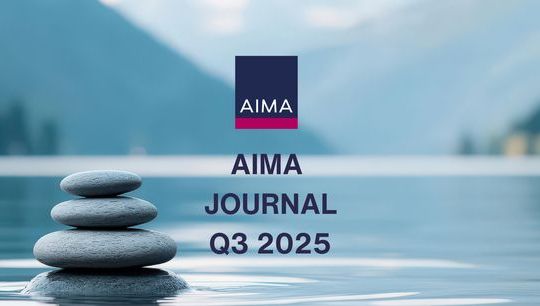2023: A compliance odyssey
By Ranjeet Sahni, Torq Capital Management
Published: 20 November 2023
Executive summary
- Regulatory pace not slowing down – underrated attributes to cope in compliance and remain a key business partner:
- Bouncebackability – individual resilience and learning from past mistakes.
- Message management – headline -> sub-headline -> detail.
- Commercial awareness – build the information puzzle using various sources to provide enterprising solutions.
2008 was not when compliance was invented, as I have had a few people muse to me in my career. Admittedly, you do not see compliance mentioned in seminal books like “Liar’s Poker” (Michael Lewis) or “When Genius Failed” (Roger Lowenstein) but I have been in compliance since 2007 so that is an obvious piece of evidence to the contrary! Since the global financial crisis of 2008, compliance’s prominence has risen rapidly because of the frenetic, widespread release of regulations, aimed to provide more effective supervision of the financial services industry, greater protection for investors and preventing systemic risks from (re)occurring. Below are a few attributes worth highlighting that sometimes go under the radar.
Individual bouncebackability
I’ve previously discussed an idea of corporate bouncebackability but within compliance, the classic definition of bouncebackability is vital. In all lines of work, it is important to be resilient and learn from one’s mistakes. This is even more the case with compliance. Compliance can be a thankless task at times, where if you’ve done performed well or no regulatory issues happen on your watch, there is a risk nobody says anything because they don’t think it’s anything special or even simpler than that – this is what was expected of you and it’s why you were employed so what’s the big deal?! Conversely, when matters do go wrong, compliance can be seen as an easy target (regardless of how much or how little compliance was at fault).
Once this happened to me and it was horrifying. Without going into the specific details, I had erroneously made a regulatory disclosure because I had misinterpreted some information I had used from our own systems. No debate here – I was at fault. The regulatory authority contacted me later that day to ensure the disclosure was correct. I knew them contacting me was not frequent, so when I went through my working out again, I realised I had made that mistake. I can still remember how nervous I was. The sweaty palms. My mind racing at a million miles an hour. The thoughts of what this might mean for my future employment. The best way to describe it was like if you’ve ever accidentally left luggage behind on public transport. Your instant thoughts go towards (i) how silly/stupid it was of you for not concentrating enough to make the mistake originally; then (ii) what contents you had and what you’re going to miss most, swiftly followed by (iii) the wider implications of leaving luggage behind on public transport and the security risk that might cause. Luckily, I submitted an amended disclosure, and nothing further came of it in one sense. In another sense though, the stress from that situation acts as a constant reminder of how pivotal paying attention to detail is.
Newspaper vs essay dichotomy
I have always said to people that I have worked with that how we write now must be different to what how we wrote when studying. In education, I would crudely generalise constructing an essay/thesis/dissertation as (i) pros; (ii) cons and (iii) conclusion. In the working world, writing in a newspaper style is more effective, particularly so with compliance. If we are trying to decipher the latest piece of regulation to affect the business and get the key points across to management for example, the ’essay way’ is unlikely to work because the audience must get through all the substance to reach the conclusion. Instead, it is more effective to get the message across like a newspaper: (i) headline; (ii) sub-headline and (iii) backfill with detail. This way, management can get the gist of what you are trying to say and can delve further into the details if they want/have the time.
That is only one part of the story though – to make the message more effective, it needs to be written in a language your audience understands. If you are writing a message to management for example, then you need to consider how they think. What are their priorities? Try to see yourself in their eyes. Their first reaction might be “So what?” or “Why does this matter to me?” Does this regulation affect the firm’s trading strategies (and if so, how)? Or the ability to raise money from a certain jurisdiction or a certain sub-set of investors? It can be easy to fall into the trap of writing detailed, eloquently written notes to prove your worth (thereby showing you have done the analysis and research) but that might not mean much if your audience is unlikely to read it and absorb the key details.
Being more ‘strategic’ or ‘commercially aware’
I do not particularly like either phrase, but they get used often enough that to ignore them is a mistake.
In my experience, what this means is (i) not just throwing the rules/legislation back at whoever asked without adding any context; (ii) speaking in the business’ language (as noted above) and ultimately (iii) creating something akin to a ‘mosaic theory’ method of gathering different pieces of information together in developing an enterprising solution:
- Internal research:
- What do you think the regulations mean for the business?
- What do others in your firm think this means?
- Market research from your peers:
- What do other Compliance Officers, CCOs/GCs/COOs think?
- Other external parties:
- Prime brokers?
- Auditors?
- Regulatory consultants?
- Lawyers?
The aim is to build a clear and concise approach to present to the business in a language they understand.
Compliance is the one department where you can get criticised for being right. We do not write the rules. We are trying to apply them in as commercial and pragmatic a fashion to match our business needs and demands. The relentless pace of regulation can make it difficult to ”see the wood for the trees” because of how easy it can be to get immersed in updating the business with the latest regulatory output. However, not every piece of work needs the same level of attention, detail, and review. This could save you time to allow to spend more focus on strategic matters.
Being asked to ‘rubber-stamp’ an initiative, however, does not mean you are being strategic. This might be a ploy that the business (reasonably) knows that compliance issues might cause problems for the initiative to proceed in its current form, so be wary of that.
Like pulling teeth?
As someone said to me recently, compliance reminds them of dentistry: (i) there is always a bit of fear and anxiety going to the dentist because you don’t know what the dentist will say regarding your teeth and what treatment (if any) you require; (ii) not going to the dentist will only make things worse but (iii) the feeling of relief (maybe not quite euphoria) when you’ve come out and everything has been fixed is worth it!
No portion of this article was drafted by generative artificial intelligence (e.g., ChatGPT, Bard or the like). I would not want a HAL 9000 coming after me!








